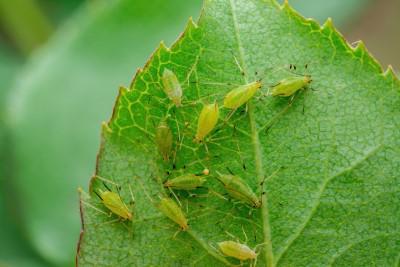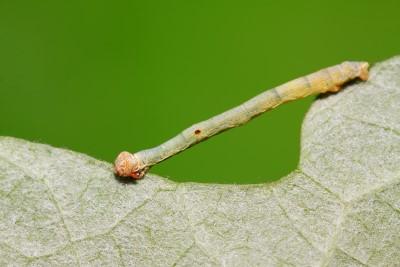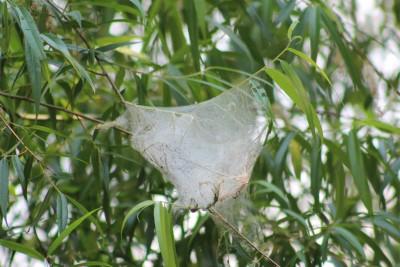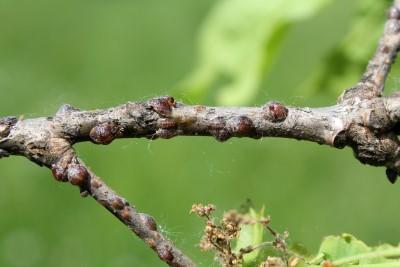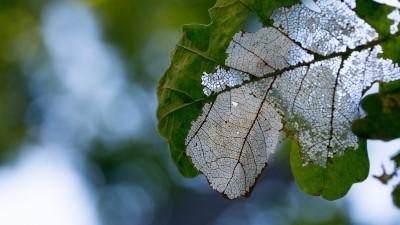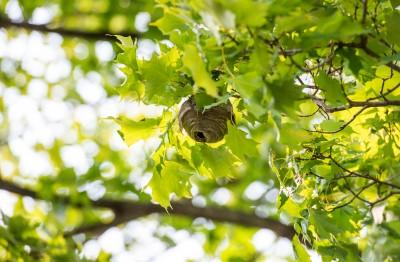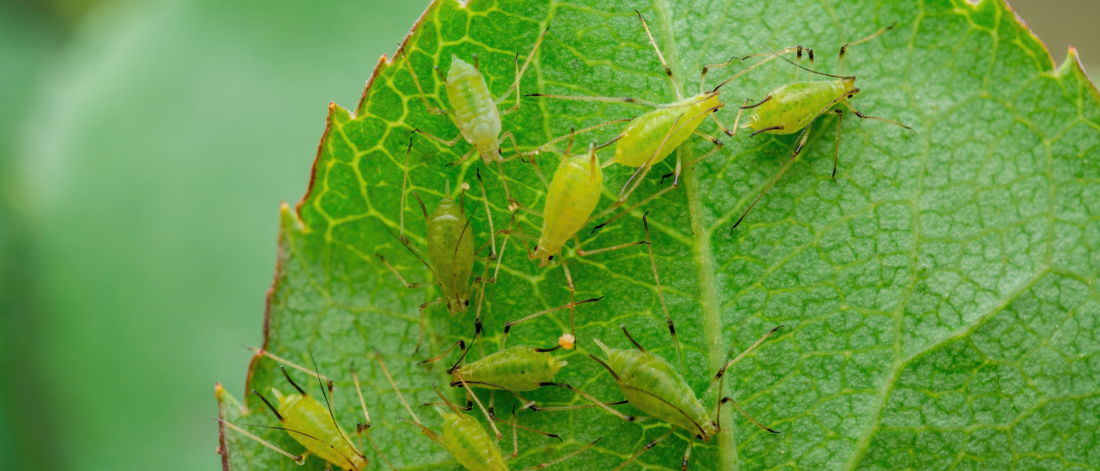
Aphids & Tree Pests
Learn about common pests, like aphids, in Surrey's trees and how to identify them.
Healthy trees are home to many different kinds of animals, including insects. Unfortunately, many insects can be annoying for people or could be harmful to the tree. These insects are known as pests.
Pest management of City trees
We manage pests on City-planted street trees using integrated pest management principles. By using this approach, we:
- use an ecological approach
- decrease risk to people and the environment
- minimize pesticide use
- consider community values
- think about the long-term financial benefits
Common tree pests in surrey
We encourage you to use non-toxic pest management strategies on your property. Before taking action on dealing with tree pests on your property, keep in mind that most of the pests below only have one generation per year, and natural predators, like birds and rodents, control some of the population.
Review our Pesticide Bylaw which offers guidelines for appropriate pesticide use in the city.
Aphids
Aphids are the most common pest in Surrey. Aphids are tiny green bugs that sit on the undersides of the leaves, eating the sap. Their waste is known as “honeydew,” and you might notice it in the summer as a sticky film on your car or on the sidewalk.
Honeydew is not harmful to people or property and the aphids won't cause any health problems for the tree. In fact, aphids are an important part of Surrey’s ecosystem. They provide food for other animals and beneficial insects, like ladybugs.
Tips for dealing with aphids
- Spray the underside of the leaves with your garden hose. The force of the water will knock the aphids out of the tree. Do this once per week to see results.
- Park away from the tree. Aphid season is short, so if you are able to park somewhere else for the summer, and hose down your sidewalk, you should be able to ignore them.
- If the problem persists or seems extreme on a City-planted street tree, call us at 604-501-5050 to have an arborist assess the tree.
Cankerworms
Cankerworms are small caterpillars, often called inchworms or loopers, that eat the leaves of a variety of deciduous trees in late spring. There are two species of cankerworms in B.C: fall cankerworm (Alsophila pometaria) and spring cankerworm (Paleacrita vernata). As the feeding continues, only the leaf's larger veins and midribs will remain. Healthy trees can handle defoliation from cankerworms, but repeated defoliation can weaken trees and make them more vulnerable to other stresses.
Tent Caterpillar
In spring, tent caterpillar eggs hatch into larvae that build communal tents out of silk in the branch joints of deciduous trees. They are very social creatures. Tent caterpillar outbreaks occur but not on a regular schedule as the outbreaks depend on other environmental and biological factors. Tent caterpillars usually don’t kill trees, but can cause severe damage, like defoliation (removing leaves). Oftentimes, the tree can produce leaves again, but repeated defoliation can weaken trees and make them more vulnerable to other stresses.
Scale
There are four types of scale insects found in B.C: lecanium scale (Parthenolecanium corni), oystershell scale (Lepidosaphes ulmi), San Jose scale (Quadraspidiotus perniciosus) and European fruit scale (Quadraspidiotus ostreaeformis). Scale insects often attack fruit trees, and look like small bumps on twigs and branches with varying colours and sizes. Heavy infestations of scale insects can cause tree leaves to turn yellow to light green and may cause stunted growth of the leaves.
Oak-leaf Skeletonizer
Oak-leaf skeletonizers are caterpillars that feed on the lower surface of oak leaves leaving only their veins and giving the leaf a skeleton-like appearance. Larvae and pupae in white cocoons in heavily infested trees may become a nuisance on buildings, cars and other objects around your home. They have two generations per year becoming active from June to September.
Wasps
Wasps help control other insect pest populations, pollinate flowers and have an essential role in our ecosystem. Some ways to prevent encounters with wasps are to empty your trash cans frequently, ensure they are properly sealed and ensure food and drink aren't left outside. Learn more about beneficial wasps.
Many species of wasps build round paper-like nests in trees, and most are active between June and September. Nests that are visible and near human activity can be a problem. If there is a concern about stings, the nest should be removed.
Bees are also important pollinators and help enhance biodiversity. Beehives are larger than wasp nests, while wasp nests are smaller and umbrella-shaped. Do not remove beehives.
